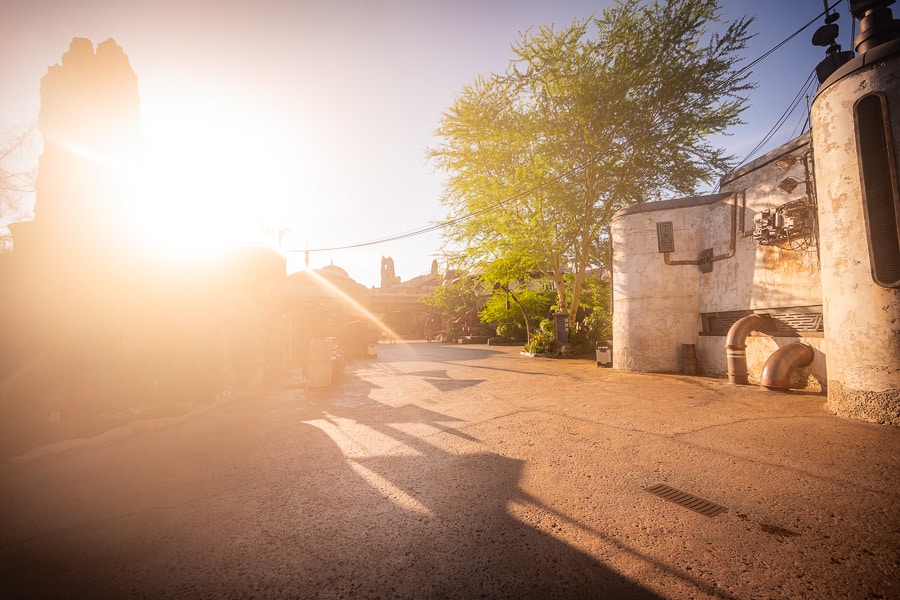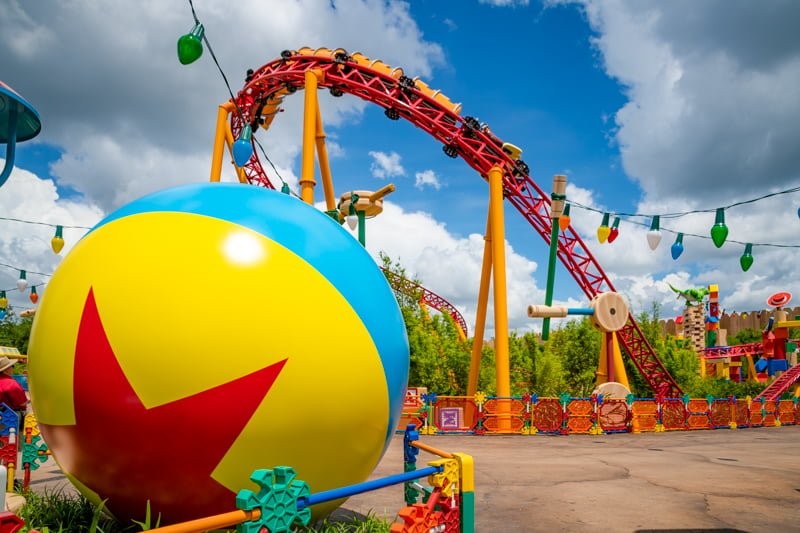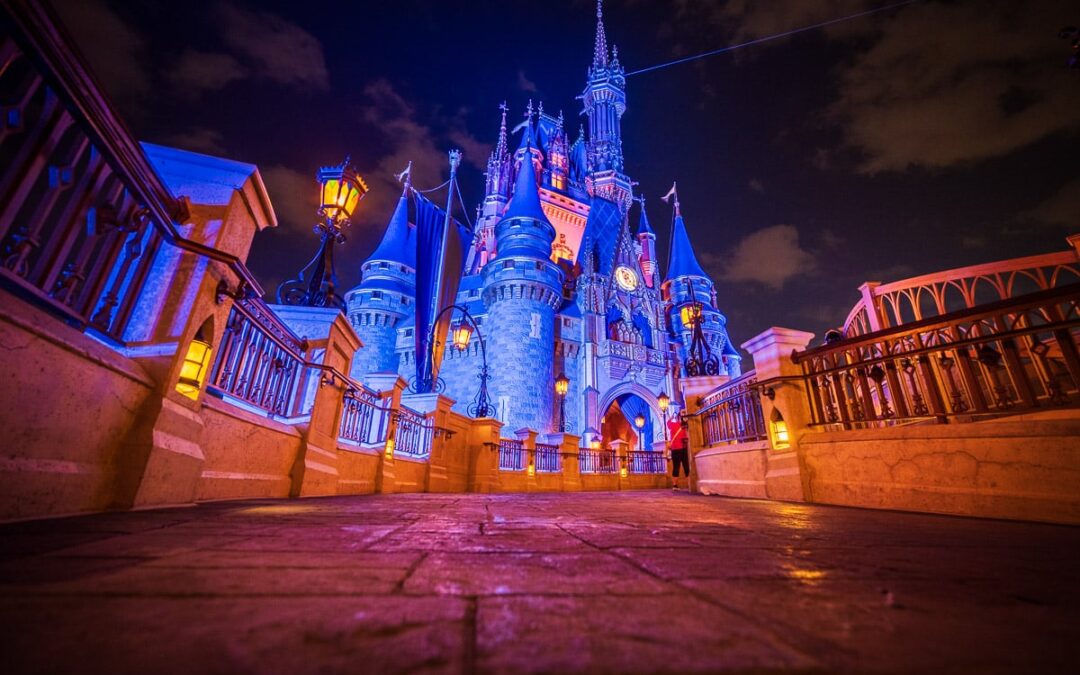

Walt Disney World is having a slow summer. Another one. This does not mean that the parks are dead or ghost towns. Calling the parks empty is an exaggeration. However, attendance has decreased noticeably, wait times are down, ADR availability is ample, and the company continues to pull new levers to entice locals and fans back to the parks. We dig into the data and offer our theories for the summer slowdown.
The one thing summer hasn’t been, though, is peak season. Not for a long time. Back on June 26, 2017 we first published: Summer Is Not Peak Season at Walt Disney World. That explained how, despite the conventional wisdom that Memorial Day through Labor Day is the busiest stretch of the year in Florida, summer crowds weren’t as bad as in the past. It offered several potential theories explaining the why of this.
Last year, we followed that up with Summer (Still) Is NOT High Crowds Season at Walt Disney World. If you want a recap of 2016-2018, 2019, 2020, 2021-2022, and 2023-2024 (all listed separately because they have their own unique wrinkles), so the first half of that post. It explains the Star Wars Slump, “Revenge Travel,” overly aggressive pricing, and more. We’re revisiting the topic again in 2025 because this year is once again its own new ‘era’ and crowds have been even lower thus far in Summer 2025.
You might notice that the titles of these posts have ‘evolved’ over time. The first was that summer is not peak season. The second was that it’s not high crowds season. This one is that summer is the new lower crowds season. None of that is coincidental. This trend started about a decade ago, but contrasting crowd levels from those summers with today makes them look downright packed by comparison. (This is because overall Walt Disney World attendance still doesn’t even approach its peak 2018-2019 levels.)
In fact, Summer 2025 has been so slow thus far that I was tempted to use the word “off-season” in the title. When I first started working on this, there was a strong case to be made that this summer was proving to be the off-season. The last week cast doubt on that, and even if it hadn’t, there’s also the reality that August and September will be slower than June and July. Can we really have a 4-month off-season stretch?
From my perspective, the answer is no. Off-season signifies the lowest of the low. Not only that, but if summer is the off-season, the “shoulder season” before it starts to lose meaning. So instead we’ll stick with cumbersome verbiage to describe what summer has become. It’s definitely not peak season, but it also isn’t off-season (yet). It’s somewhere in between. A new elbow season, if you will.
Even though June was the least-busy month of 2025, it’ll likely be surpassed by the next 3 months. Not only that, but plenty of other busier (as a whole) months do have lower lows; they’re just accompanied by higher highs to balance out averages. June has a tighter range to crowd levels, without much in the way of spikes or sharp drops. Perhaps we should call summer the “consistently uncomfortable season,” which is vague yet 100% accurate.
Before we discuss the potential explanations for why summer is (yet again) slower at Walt Disney World, let’s take a look at wait times. As always, all graphs and stats are courtesy of thrill-data.com.


June 2025 Crowds
June has been the slowest month of the year to date, with an average wait time of 31 minutes and a crowd level of 2/10. As always, that is an average, which still means that hour-plus waits (or even 90+ minutes!) are possible for the headliners at peak times. They’re just offset by 5-10 minute waits for lower profile attractions.
There have also been plenty of days that have been busier than that average. June 2-3 had 36-37 minute waits for 5/10 and 6/10 crowd levels; June 23-24 had 35 minute averages for 5/10 crowds. By contrast, June 12-15 was the slowest stretch of the month, with wait times bottoming out at 22 minutes (1/10 crowds) and never exceeding 30 minutes (on average) for that stretch.
To the point about more consistent crowd levels across summer, it’s worth pointing out that even as June ranks 6 (out of 6) for crowd levels thus far in 2025, it still only had two truly ‘dead’ days. In fact, if you zoom out further, there wasn’t a single day in June that was among the least busy 30 days in the last year. There were many dates from last August through December that beat June (although hurricane scares played a role in September and October).
Not that it’s any surprise at this point, but weekends are less busy than weekdays. This is a trend that’s several years running, but is amplified during summer and minimized once Party Season starts. As a whole, June 2025 was slightly less busy than May, which was slightly less busy than April (one minute month-to-month decreases in both cases).
If you’re trying to trend-spot or time a vacation next summer, the last week of June was the busiest and the second week of the month (leading up to Father’s Day) was least busy. These are about as close to patterns as we get for summer travel, and you can probably expect something similar in June 2026. Other than that, not really a ton that’s worth talking about. Summer is the least interesting season for crowds since it tends to be the most consistent.


Before we turn to potential explanations, let’s preemptively rule out anything that falls apart when examining the heavy crowds over Easter, or the potential for year-over-year increases during October, high crowds at Thanksgiving, Christmas, New Year’s, or in Winter 2026.
Basically, any theory that would be contradicted by higher crowds in the last few months or the next few months is off the table (e.g. higher prices, fewer perks, Disney’s declining reputation). This may seem obvious, but it’s nevertheless necessary because discussing attendance has become a loaded issue with many fans who want to see their own narratives reinforced. If you believe that Disney is doomed or failing because of X or Y, that is certainly your prerogative, but X or Y as an explanation kind of falls apart when crowds get crazy–and they will, later this year.
With that out of the way, let’s talk theories as to why summer is slower now than it was back in the day…


Epic Universe
We might as well start with the elephant in the room: Epic Universe. This is where we begin not because I believe it’s the #1 explanation for lower crowds at Walt Disney World. But rather, because this is the #1 rationale that many fans will proffer–especially those wanting to see Disney “taken down a notch.”
My unpopular opinion is that Epic Universe has close to no net impact on summer crowds at Walt Disney World. It does undoubtedly have some impact at the margins, and there are countless anecdotes (we’ve heard ’em!) about fans skipping Walt Disney World for Universal this year. That is unquestionably happening. However, new visitors are also being drawn to Orlando due to Epic Universe and also visiting Walt Disney World as a result (the “rising tides lifts all ships” thesis).


It’s not even necessary to get into all of those anecdotes and theories to determine which side is “winning,” because we have data. As explained in our Epic Universe 2025 Crowd Calendar Predictions: High Crowds Despite Low Attendance?!, Epic Universe ticket sales are low.
On an average day this summer, Epic Universe is greeting fewer guests than Animal Kingdom. That’s not good. While high wait times often reflect high attendance, they can also reflect low capacity. That’s the true tale of Epic Universe thus far: high wait times due to low throughput masking low attendance (got all that?!).
We can also look to wait times data for Universal Orlando. The resort as a whole is about on par with last year’s numbers, but if you look at only Islands of Adventure and Universal Studios Florida (the two parks open last summer), they’re down in Summer 2025 versus last year. So either Epic Universe is cannibalizing attendance at Walt Disney World and Universal Orlando (but disproportionately the latter), or there are better explanations as to why both operators continue the downtrend. In our view, it’s the latter.


International Travel
During the most recent earnings call, Disney CFO Hugh Johnston was asked if the domestic parks have seen a hit to international visitation (reasons discussed in Canadians Are Canceling Walt Disney World Vacations).
In terms of the attendance, Johnston indicated that international attendance at the domestic parks still has not gotten back to pre-COVID levels (this is not a new development), but it is still in the double-digits. As for recent international visitation, Walt Disney World and Disneyland have “seen a bit of an impact” of roughly 1% to 1.5% declines.
What Disney expects going forward is something similar to that, but the company points out that it is “more than making up for it with domestic attendance–attendance at the parks has been terrific.” More broadly speaking, data shows that demand from Canada has dropped sharply, and there are early indicators (surveys and statements from airlines) suggesting a similar dynamic from Europe.


Still, as we discussed in the aforementioned article about Canada (and Disney’s own data reinforces), international travelers are not that significant of a demographic for Walt Disney World. If every single international visitor stayed home, it would be very noticeable–but that’s not even close to what’s happening. It’s a downtick of a few percentage points, at most.
It’s also unclear whether the worst of this is already in the rearview mirror. The Greater Orlando Aviation Authority just released stats for May 2025, and they’re illuminating. International passenger traffic was up 9.3% for the month, while domestic passenger traffic was down 4.2% for a combined decrease of 2.6%. The rolling 12-month total stands at 56.5 million annual passengers.
International traffic now accounts for 14.6% of passengers at MCO, an all-time high, surpassing the previous record from the summer of 2019, with an average of over 22,500 international passengers per day. Of course, MCO did add a new terminal, which has contributed to its record-setting run, but that was nearly 3 years ago at this point. Anyone who has passed through the legacy terminals in the last year-plus can tell you that MCO is insanely busy…pretty much all the time!


Economic Uncertainty
Disney’s CFO indicated during last December’s earnings call that they need to be “smart about pricing,” especially at the lower end of the market where consumers are “feeling stress.” (This is similar sentiment to what fast food chains and retailers have reported during their recent earnings calls.)
Johnston said that Disney has tried to hold prices steady for lower-priced offerings at the parks and that most of the price increases were concentrated among premium packages or during high-demand dates. He added that the company wants to “tap in to those families and build the habit of coming to Disneyland or Disney World, not one time, but multiple times.”


All of this explains why Walt Disney World has gotten so aggressive with discounting this summer. As we’ve reported at length elsewhere, you could get the cheapest Walt Disney World trip in July 2025 since at least 2019. That’s kind of crazy if you realize how much base prices have exploded post-COVID. This is a trend we expect to continue, with higher-occupancy winter months getting more expensive and summer further decreasing in 2026 and beyond.
At the same time, we’ve repeatedly cited consumer confidence, economic anxiety, ongoing inflation, Americans being squeezed from every direction, and more as reasons why Walt Disney World could see decreased attendance in the future. And yet, the number one thing we keep hearing on corporate earnings calls is how “resilient” the American consumer is and how “robust” spending remains.
It would seem that people express fear, anxiety, and concerns when surveyed about this stuff, but then behave differently. (In fact, survey data also bears this out, there’s a decoupling of perceptions about the broader economy versus their own finances–and has been for a few years.) In other words, this is a non-factor…for now?


Starlight Delays
Then there’s theoretical delayed trips for Starlight Night Parade and/or Test Track opening, similar to the pre-Star Wars Slump of 2019. I find this to be implausible at scale. We’ve seen nothing to indicate a meaningful number of guests postponed trips in the lead-up to Guardians of the Galaxy: Cosmic Rewind or TRON Lightcycle Run, nor were there noticeable spikes after those debuted.
They were, essentially, non-factors. This is actually an interesting topic in and of itself (one of my theories is that the complexity of accessing new attractions has given guests cold feet about planning around them), but beyond the scope of this post.
Honestly, I wouldn’t be surprised Walt Disney World saw a bigger bump this holiday season or in early 2026 due to Epic Universe (guests “waiting out the crowds” + “rising tides” thesis) than they will from any of their own upcoming offerings. And even then, I don’t think the (positive) Epic effect will be all that meaningful.


Shifting Schedules
Back when we first tackled this topic in 2017, shifting schedules was offered as one explanation–more schools switching to year-round calendars with longer breaks throughout the year. I was somewhat dismissive, as that was not a sudden occurrence that began in the last few years. School calendars have been trending this way for a decade or more.
I am much more receptive to this explanation now. In fact, I’d go as far as to say that this is the dark horse candidate that probably isn’t given enough credit. Summer is the most convenient time for most families to visit due to school breaks. This is the rationale for summer being the peak tourist season in the first place. For decades, summer has seen sustained crowds at just about every tourist destination, for that very reason.


However, we would posit that this matters less and less in the post-COVID climate. After extended stretches out of school, families are less “afraid” to pull their kids out of school for vacation. Not all families or even most families, but just enough to move the needle. Anecdotally, we’ve heard from more and more readers who do exactly this. We can’t back it up with hard stats, but it passes the smell test and seems highly plausible to us.
Equally as important given the rise of the childless Disney Adult as a core demographic for Walt Disney World is the hybrid work/play trips. Although many Americans have faced return to office mandates, remote work is still a viable option for many, giving rise to a new generation of digital nomads.
As people who did this long before it was normalized by COVID, we’ve observed this in a number of destinations we frequent. It used to be the case that more desirable “off-season” dates were cheaper and less busy; but now, word has gotten out and numbers have leveled out. An illustrative example of this is winter crowds at Walt Disney World, which continue to increase comparatively. That’s also what makes this the best explanation, in our view, as it shows the redistribution of attendance in action.


High Heat & Humidity
Summer being unbearably hot and humid in Central Florida is not a recent development, so this should be a year-over-year non-factor. However, the last few summers have been especially brutal and that has garnered headlines. The Orlando area has seen record-setting highs on several occasions, wirth temperatures consistently in the 90s, with “feels like” temperatures well above 100º.
If you take Disney at its word, weather is the overriding factor in the summer slowdown. It was such a hot topic that it drew an explanation from CEO Bob Iger, who attributed the slowness to an exhaustion of pent-up demand in Florida as a whole and unseasonably bad weather, even by summer in Orlando standards. On subsequent earnings calls, the CEO or CFO have mentioned Florida weather on a few more occasions.
It’s not just Disney, either. In its quarterly and annual points, OLC (the owner and operator of Tokyo Disney Resort) has repeatedly pointed to weather as the primary reason for lower attendance. Given that OLC is more transparent about its numbers–and doesn’t have a huge portfolio of parks to cloud the results–this explanation strikes us as more plausible. This is playing out again in Summer 2025, with the last two months being the slowest stretch at Tokyo Disneyland since last August.


When it comes to weather, the big wild card now is awareness. The internet continues to break down barriers, and what used to be an abstraction in the text of various books and resources is made plainly visible and presented in more colorful ways. It’s one thing to read about high heat in Birnbaum’s, it’s another entirely to see your favorite vlogger sweat their way around World Showcase. The former you might be more likely to dismiss, questioning just how bad it could be. The latter is much more vivid–a tangible cautionary tale.
Add to that the aforementioned willingness to pull kids out of school, and there’s a scenario where families have increased information decreased incentive to visit in the summer. Others who are reluctant or unable to skip school might simply be more inclined to visit during breaks.
The incentive point extends to Annual Passholders and locals. Floridians stay home when the forecast turns unseasonably hot, humid or rainy. Some of them might bear the weather if Disney gives them a reason to do so, as used to be the case with summer celebrations. That hasn’t been true for a few years, though. On top of that, I would hazard a guess that Central Florida’s growing transplant population is not suited to summer weather, and stays in the cooling comfort of air-conditioning during the summer months (disproportionate to native Floridians).
This comfort-seeking behavior also explains why feels like crowds or congestion is lower during the summer. Whereas in the winter guests might wander around enjoying the atmosphere of the parks, they seek refuge indoors like heat-seeking missiles (except in reverse). That actually could mean that wait times are elevated relative to attendance during the summer months. Anecdotally, I can say with complete certainty that the parks often look dead from June through September even if the wait times don’t always reflect that.


Shorter Hours
I feel like a broken record about this, but back when we fell in love with summers at Walt Disney World, the hours were longer. Although EPCOT and DAK are unchanged, Disney’s Hollywood Studios saw later closings on Star Wars Weekends nights and Magic Kingdom was open until 11 pm or midnight every night, with evening Extra Magic Hours until as late as 3 am.
Being able to Park Hop to Magic Kingdom and stay as late as 3 am made the summer heat more tolerable to plan around. We could start early, take a midday break, and then return for ~6 hours after sunset. It made summers satisfying, and was an easy way to mitigate the high heat.
Thankfully, Starlight will bring back those 11 pm closings, but it’s still perplexing that only one Walt Disney World theme park is currently open for an hour after sunset. There’s a reason why Extended Evening Hours is so much more popular during the summer months, and Walt Disney World knows this. Yet, it seems like a vicious cycle for summer park hours–with lower crowds begetting shorter hours.


No Special Events
Speaking of special events, another factor is the lack of special events to prop up summer numbers. This is somewhat an outgrowth of weather, because Walt Disney World simply cannot schedule runDisney races or outdoor ESPN Wide World of Sports competitions in June or July. It’s likely that Disney Meetings and Fairytale Weddings sees a similar summer slowdown.
It’s once again Diet EPCOT during the summer, with that being telegraphed far in advance for 2025. (Last year, at least there was the launch of CommuniCore Hall.) To be fair, there is GoofyCore Hall and Cool Kid Summer as the summer push, but that is largely marketing. It’s not like the summer ‘spectaculars’ of old, and I cannot imagine that an appreciable number of visitors booked for the substance of Cool Kid Summer. (The discounts are a different story.)
All of this is precisely why we expected a new festival at EPCOT or a revival of Summer Nightastic. Walt Disney World used to have blockbuster events that kicked off Memorial Day weekend, and made summer an exciting time to visit despite the weather. Maybe we’ll see a return to that in 2026, as even aggressive discounts haven’t moved the needle much.


Minimal Mitigation
I also feel like a broken record about this, but Imagineering has seemingly built all of its recent expansions for the California climate. Toy Story Land, Star Wars: Galaxy’s Edge, World Celebration, and more are absolutely miserable ~8 months of the year. There’s little shade offering a way to escape the heat or summer showers.
It’s honestly mind-boggling that Walt Disney World has not only done nothing in terms of mitigation measures, but they’ve instead actively built things for a more Mediterranean climate. The most popular and newest areas of the parks–the places people spend a disproportionate amount of time–being especially unpleasant during the summer has likely contributed to guest perceptions that summers are less comfortable at Walt Disney World.
There are likely other variables I’m overlooking that could help explain why summer attendance has been down. Other factors might be at play, and in aggregate may have a noticeable impact, but I think those variables would be something visitors wouldn’t notice if it weren’t for the pricing, post-COVID schedule disruptions, and the weather.


Ultimately, it’s true that wait times have been below-average thus far in Summer 2025. Not quite off-season levels but not even rising to moderate. It’s also true that this is not a recent development. Summer being slower was the new-normal for a few years pre-COVID closures, and that trend has only accelerated since. Judging by the wait times we’re currently seeing, not even Walt Disney World’s lowest prices since at least 2019 could reverse the trend. It’ll be interesting to see which new levers they pull for 2026.
Before you read all of this and think that summer suddenly sounds like a great time to visit, uh, don’t. If you previously ruled out a summer vacation to Walt Disney World, consider the possibility that you did so for good reason. I’m not saying you’ll have a bad time–as we often say, “a rainy day at Walt Disney World is better than a perfect day at home.” That’s true as always.
What I will say is that whatever “gains” you’ll experience during summer at Walt Disney World by virtue of objectively lower crowd levels and wait times will be wiped out by subjectively inferior everything else. If you forced me to choose between mid-June and mid-December, I would choose the latter without hesitation. I would take 5/10 crowds with great weather and seasonal events over 1/10 crowds with miserable weather and nothing special happening. And it’s not even a remotely close call. Judging by all of the above, it would seem that I’m far from alone in this sentiment.
Planning a Walt Disney World trip? Learn about hotels on our Walt Disney World Hotels Reviews page. For where to eat, read our Walt Disney World Restaurant Reviews. To save money on tickets or determine which type to buy, read our Tips for Saving Money on Walt Disney World Tickets post. Our What to Pack for Disney Trips post takes a unique look at clever items to take. For what to do and when to do it, our Walt Disney World Ride Guides will help. For comprehensive advice, the best place to start is our Walt Disney World Trip Planning Guide for everything you need to know!
Your Thoughts
Do you agree or disagree with our assessment as to why summer crowds at Walt Disney World have been below-average? Or, do you disagree entirely, and think it’s been as busy–or busier–than normal? Any observations about attendance trends during the fall months that follow this summer dip? Hearing your feedback about your experiences is both interesting to us and helpful to other readers, so please share your thoughts or questions below in the comments!

